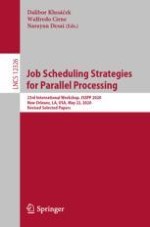2020 | OriginalPaper | Buchkapitel
Accelerating 3-Way Epistasis Detection with CPU+GPU Processing
verfasst von : Ricardo Nobre, Sergio Santander-Jiménez, Leonel Sousa, Aleksandar Ilic
Erschienen in: Job Scheduling Strategies for Parallel Processing
Aktivieren Sie unsere intelligente Suche, um passende Fachinhalte oder Patente zu finden.
Wählen Sie Textabschnitte aus um mit Künstlicher Intelligenz passenden Patente zu finden. powered by
Markieren Sie Textabschnitte, um KI-gestützt weitere passende Inhalte zu finden. powered by
